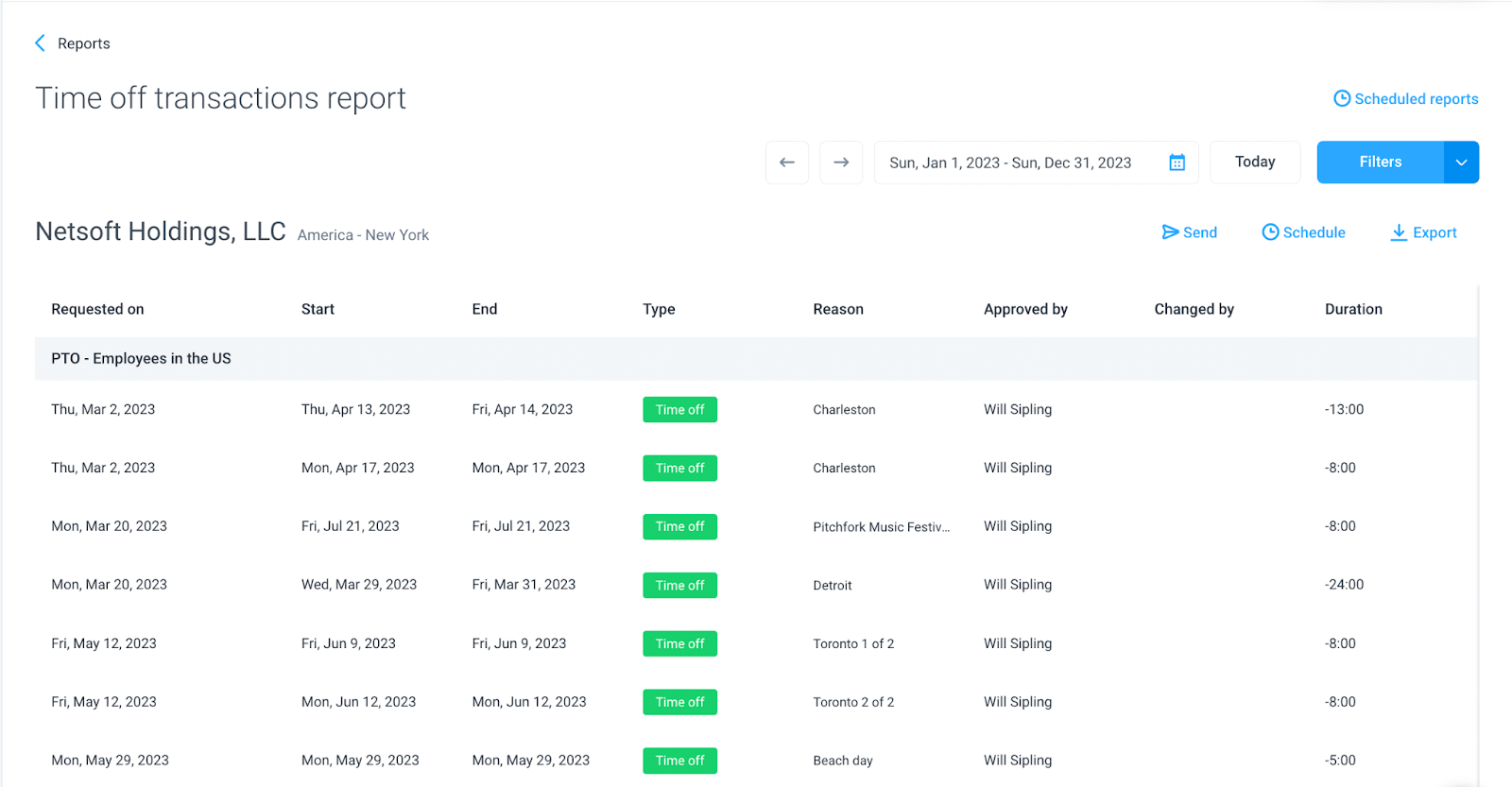Are you taking advantage of all the vacation time available to you as a remote worker, or have you gotten stuck with decision paralysis over using PTO vs. vacation time?
While it’s not initially apparent, there’s often a significant difference between PTO and vacation. Developing some strategies to understand these classifications and maximize your time away from work can help ensure you get the full benefit of this time off.
In this blog post, we’ll dive into the key differences between PTO and vacation time so you and your team can correctly manage time off. You’ll learn:
- When vacation time is the same as PTO
- How to maximize your options
- How employees can frame requests correctly to save time and money
- Ways to manage PTO, vacation, and other time off balances
Let’s get started.
Boost your team’s efficiency with Hubstaff's productivity tools
An overview of the PTO vs. vacation decision
When it comes to taking a break from work, you may get caught between choosing vacation time or paid time off (PTO). Let’s create an understanding with clear definitions to see vacation time vs. PTO.
What is PTO?
PTO encompasses personal days, sick leave, bereavement, and other types of leave where you’re paid at your normal rate. PTO offers employees multiple options to be away from work and use days for their own purposes (including unforeseen emergencies).
What is vacation time?
Vacation time is a subset of PTO many U.S. companies offer as an employment perk. Employees can use it to take off for extended periods, but company-specific policies might dictate:
- How much time you can take off
- How much notice you need to give
- What time of year you can use this time off
While nearly 80 percent of privately-owned U.S. companies offer paid vacation, it’s not required by law. This means that companies can offer paid vacation, unpaid vacation (where the hours spent on vacation would be subtracted from your paycheck), or no policy at all.
Vacation time vs. PTO: Is paid time off the same as vacation time?
The answer to this question depends on your location, industry, company’s policy, and several other factors.
In Europe, workers are guaranteed 20 or more days off a year. However, the FLSA states that the U.S. has no law requiring companies to provide PTO to their employees. This leaves U.S. companies to create their own PTO policies that specify:
- How much PTO is available to each employee
- How PTO is accrued
- What use cases you can apply PTO for (sick days, vacation, bereavement, etc.)
- What use cases count as unpaid time off
Companies with PTO policies may have stricter regulations or limitations on how much time an employee can take off annually or at a given time. Others may set rules for different kinds of PTO, such as sick versus vacation days, to address potential misuse. Your policy will play a significant role in understanding all personal time off vs. vacation usage.
To learn more about personal time vs. vacation time, you can review this detailed Hubstaff guide on each different kind of PTO and how they work.
How to maximize your paid time off vs. vacation time
One key to happiness at work is not being there all the time.
Part of creating a good work-life balance is taking opportunities to stretch your legs and take a vacation. To make the most of your time off, consider these different scenarios and how much they take up your allotted time.
Review your company’s PTO policies. From there, look at the calendar and see what time is important to you. Here are a few tips:
- Set aside days for big holidays. If your company doesn’t already give you holidays off, encourage employees to plot these out before the new year.
- Think about when you like to travel or vacation. Have employees ask for this time off as far ahead as possible so you’re more likely to approve the request.
- Factor in sick/mental health days. Depending on your policy, it’s important to save some extra days to take when you’re not feeling well or need a mental health day.

How many days you set aside depends on how often you tend to get sick, how much you travel for the holidays, and a number of other factors. With these factors in mind, you can maximize PTO vs. vacation time.
The benefits of taking regular vacations
Taking regular vacations has been proven to provide a multitude of benefits. Not only does it allow for a break from the daily grind, but it also positively affects both physical and mental health. Understanding the difference between PTO and vacation time makes it easier to fully recharge.
Studies have shown that individuals who take vacations have lower levels of stress, improved mood, and greater overall well-being. Additionally, taking time off work and getting out of your routine can increase productivity and motivation upon returning to daily responsibilities. With all these benefits, it’s clear that taking regular vacations should be a priority for anyone looking to improve their quality of life.
So go ahead and book that trip. Enjoy the many advantages of taking time off when you need it. Treat yourself!
Is vacation paid time off? Making vacation time feel like PTO instead of work
As hardworking professionals, we all need a break from the daily grind. But taking a vacation can come with its own stressors, especially when you’re worried about making the most of your paid time off.
Fortunately, there are several tips you can use to maximize your time away from work and achieve true relaxation:
- Plan ahead and communicate clearly with your colleagues and supervisor to ensure a smooth transition while you’re out.
- Disconnect from work entirely by turning off email notifications and avoiding work-related calls or messages.
- Set specific goals for your vacation. You might spend time exploring a new city or relaxing on the beach. Think about adding in self-care activities like exercise and meditation.
- Give yourself a buffer. Studies show that taking longer breaks can help improve your overall professional performance. However, you may experience stress after a vacation if you immediately return to work or big projects. Consider adding a day to the end of any trip to recharge at home.
- Work with your team on the return process. Ensure you ask for more time to review emails and catch up on messages before being inundated with requests or tasks.
Planning time off is stressful. There are many things to consider, such as where to go, how to get there, where to stay, and how much money to budget.
When you factor in shutting things down at work, it can be both exciting and overwhelming. That said, understanding and planning for these items as much as possible before your trip will help ensure it’s ultimately relaxing and leaves you feeling refreshed.
Financial considerations when taking a vacation or using paid time off
I know you’re now in vacation mode and thinking about planning your next trip. But you’ll also want to consider the financial aspects of vacation planning and PTO usage. Don’t just review your trip’s budget. Make sure you check your PTO allocation, too.
Ask your company’s HR team what is the difference between paid time off and vacation time. See if you have any rollover from year to year or if your company pays you back for unused time at the end of the year. If they offer those kinds of payments, using sick days for illnesses or time off will be essential before you dip into vacation days.
Your employee handbook should have this information readily available. When planning an extended vacation, double-check that this information is current. Also, look for any requirements you have to avoid scheduling issues.
You may discover that your days don’t roll over, and your company doesn’t pay for unused PTO. That means you’ll also want to make those year-end requests soon so that they’re approved and you fully utilize your benefit.
If you’re a manager, work with your team members to get these requests in soon so everyone can use their PTO or vacation days fully. This keeps individual employees happy and builds greater team cohesion. Remember, as a leader, you want to correctly answer when someone comes up and asks, “What is the difference between paid time off and vacation time?”
Hubstaff makes it easy to offer and use time wisely
Ultimately, paid time off and vacations provide a unique opportunity to experience new things, broaden one’s horizons, and enjoy life a little more. So be sure to use your paid time off vs. vacation time wisely and take the breaks you need when they come up.
If you want to get the most out of your valuable vacation or paid time off days, make sure that you plan ahead and cover all the financial considerations when booking your trip or taking some time away from work.
Business owners and managers can ensure your team members and you make the most of vacation time vs. PTO by using a simple system for scheduling, approving, and tracking all PTO requests. Hubstaff makes it easy with a simple dashboard that lets team members see what they can request while managers can view all requests at a glance.

Hubstaff makes it easy for you to offer compelling PTO vs. vacation time benefits while ensuring every shift is adequately covered. Even better, you can try it for free and see how easy it is to be a leader in employee PTO benefits.
Most popular
The Critical Role of Employee Monitoring and Workplace Security
Why do we need employee monitoring and workplace security? Companies had to adapt fast when the world shifted to remote work...
15 Ways to Use AI in the Workforce
Whether through AI-powered project management, strategic planning, or simply automating simple admin work, we’ve seen a dramatic...
The AI Productivity Panel: Lessons From Leaders on What’s Working (and What’s Not)
When I moderated this AI productivity panel, I expected a solid conversation. What I didn’t expect was the flood of real-world i...
Employee Performance Dashboards: Templates, Tools, and Best Practices
Keeping track of how your team’s really doing can be tricky. Spreadsheets pile up, one-on-ones only tell part of the story, and...




